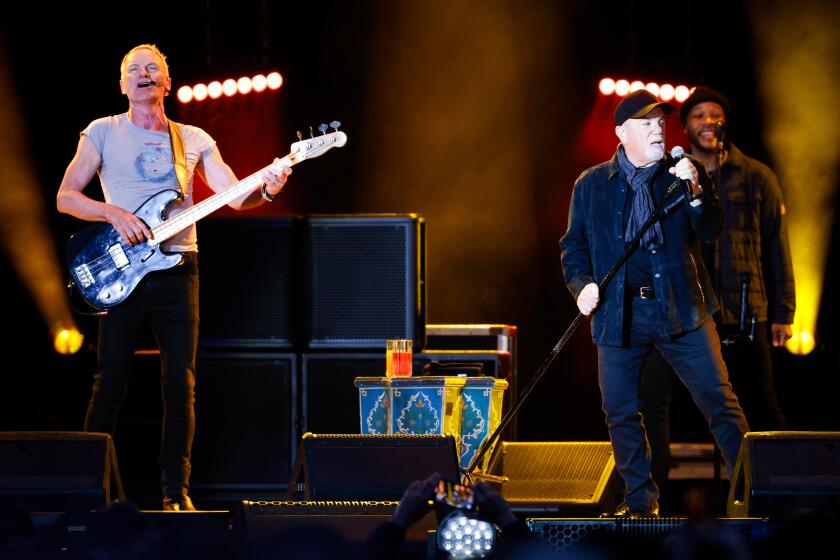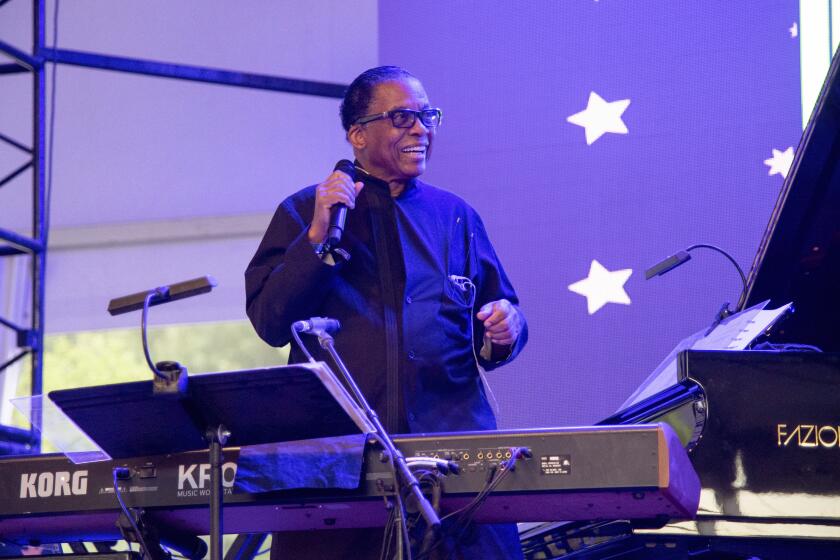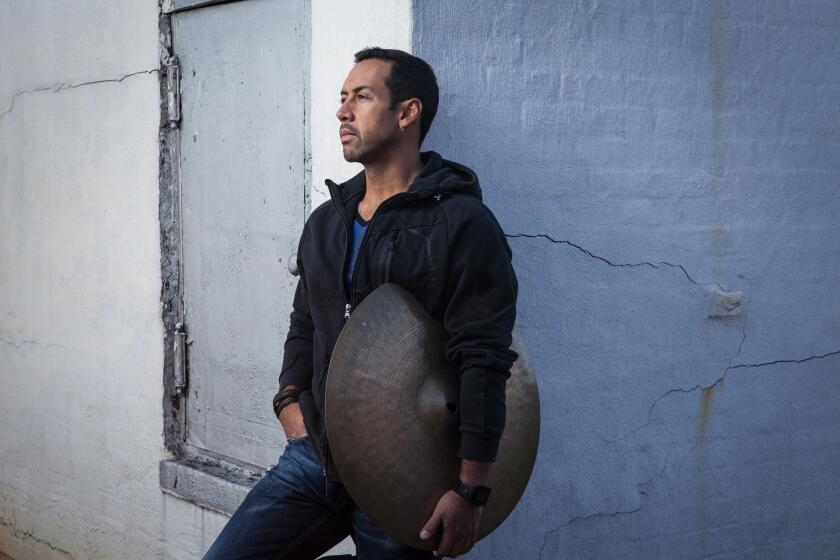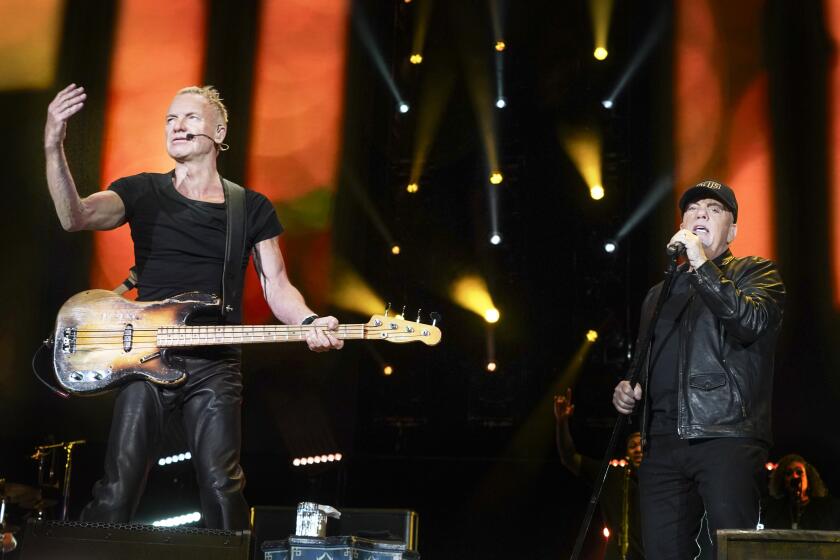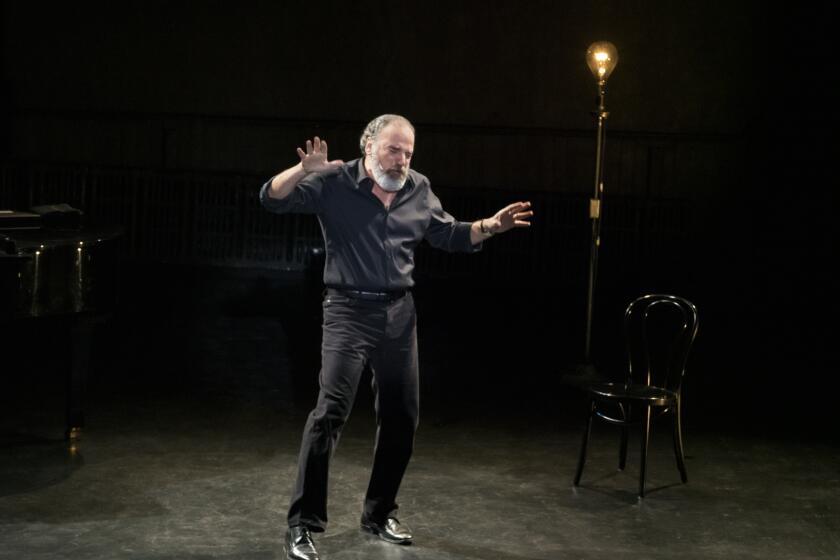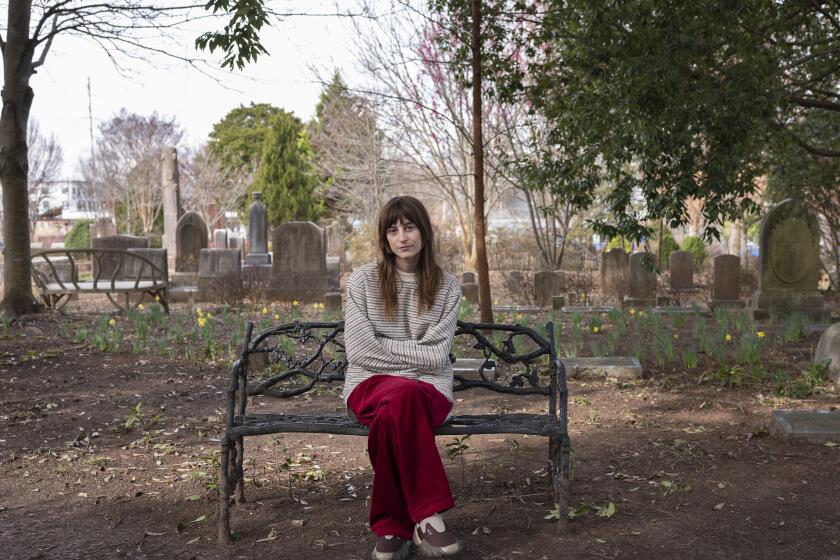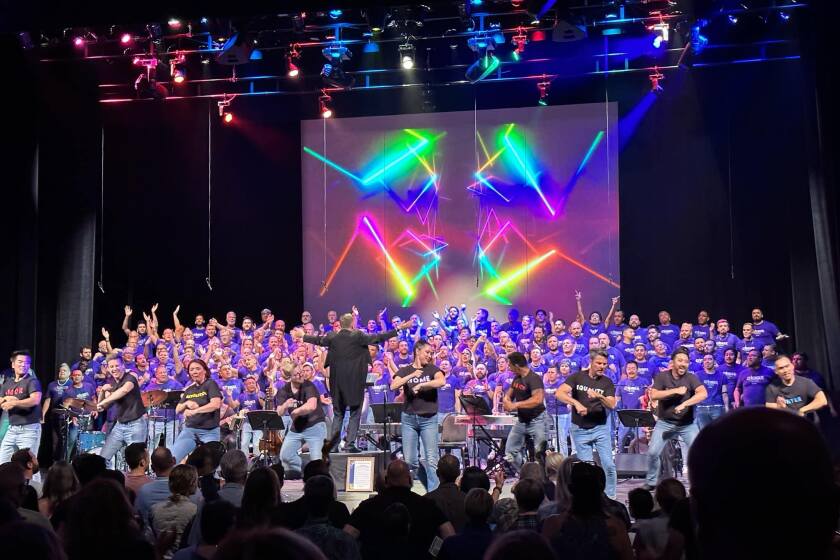Cindy Blackman Santana, a drum dynamo in jazz and rock, on music, her all-star new album and famous husband
Her 12th and newest album features Carlos Santana, John McLaughlin, Metallica’s Kirk Hammett, Living Coulour’s Vernon Reid and more
How did acclaimed drummer Cindy Blackman Santana react when her husband and musical partner, guitar legend Carlos Santana, first suggested she make an album featuring her singing?
“I was like: ‘That’s OK, honey, but thanks’!” she recalled with a hearty laugh.
“Just because I love drumming so much, my first thought about making any music is to get on the drums and create with people. Before I met Carlos, my mother would say to me: ‘You should sing!’ I would tell her: ‘Oh, mom, you love me. Thanks very much, but no, thank you.’ Then Carlos would hear me around the house and say: ‘You should sing.’ I said: ‘No’.”
But times, like time signatures, can evolve and change in the hands of a gifted and flexible drummer. And Blackman Santana is extremely flexible, as she has demonstrated on her 11 previous solo albums and her collaborations with everyone from Lenny Kravitz, Patti LaBelle, The Drifters and Rock & Roll Hall of Famer Jack Bruce to such jazz heavyweights as singer Cassandra Wilson, trumpeter Freddie Hubbard and saxophonists Jackie McLean and Sam Rivers.
Now, Blackman Santana has found her voice — literally — on her new solo outing, the proudly eclectic “Give the Drummer Some.” She sings on 11 of the 17 selections on the genre-leaping album and co-wrote 15 of them. The musical guests include her husband and such fellow guitar stars as fusion-jazz pioneer John McLaughlin, Metallica’s Kirk Hammett and Living Colour’s Vernon Reid.
“Give the Drummer Some” was co-produced by Blackman Santana, her husband and ace drummer-turned-producer Narada Michael Walden, whose past credits include hit recordings with Aretha Franklin, Whitney Houston and Mariah Carey. The album’s title is a nod to James Brown’s oft-sampled 1969 classic, “Funky Drummer,” on which Clyde Stubblefield’s intensely propulsive playing prompted Brown to exult: “Give the drummer some!”
Blackman Santana’s only singing on record till now was on “I Remember,” which she wrote several decades ago. She performed it on the 2016 album “Power of Peace,” a collaboration between her husband’s band and fellow Rock & Roll Hall of Fame inductees, The Isley Brothers.
‘I love drummers so much, I married one!’
“I love singing, but I needed some encouragement, surely,” she said. “Because if I’m singing, it means I’m either not playing drums or I’m splitting my time between them. I love the drums so much that I don’t want to split my time with anything or anybody, not even myself — or another version of myself!”
The album is the latest musical chapter for this Ohio native, who since the spring of 2010 has been the drummer in the pioneering Latin-rock band Santana. The group was founded in San Francisco in the late 1960s by her husband, former Tijuana guitarist Carlos Santana. He proposed to her in July 2010, on stage, after her drum solo at a concert in a Chicago suburb. The couple wed later that year.
“l love drummers so much, I married one!” Carlos Santana said in a 2016 Union-Tribune interview. “Cindy is a supreme affirmation that your prayers can be answered. I prayed for her, and she prayed for me. And she constantly teaches me more and more about the articulation of this (music) and (such drums greats as) Tony Williams, Roy Haynes and Art Blakey.”
Original plans for the “Give the Drummer Some” — which has been in the works since 2017 — called for the album to be equally divided between instrumental and vocal numbers. That nearly two-thirds of the songs ended up featuring enthusiastic vocals by Blackman Santana was purely incidental, not by design.
“It happened very organically. We recorded all the instrumental stuff first and the vocal stuff came later,” she said, speaking from the Hawaiian island of Kauai, where the Santanas have been living since the coronavirus pandemic accelerated in March.
“Somebody had suggested to me that I have one side of the album be all-instrumental and one side all-vocals. But the more I thought about it, the more I did not want to do that. I wanted to create something akin to a live concert and something that was about mood, tone and color, rather than genre or style. So I went with my heart.
“I talked to Carlos about it, and he said: ‘You’re right. Follow your heart because that’s what people will feel.’ And who knows better than him? Because he follows his heart. And that’s exactly what I did. My heart told me to sequence the songs on the record the way it is now, which is inclusive, with all the songs telling a story and taking you on a journey from beginning to end.”
Songs inspired by Miles Davis, Prince
Just how adroitly Blackman Santana performs different styles is handily demonstrated throughout “Give the Drummer Some,” which is her 12th solo album. Her first, 1988’s “Arcane,” teamed her with such jazz luminaries as saxophonist Joe Henderson and trumpeter Wallace Roney.
Her new album opens with a blues-tinged version of John Lennon’s “Imagine,” followed by “We Came to Play,” a blazing fusion romp with former Miles Davis/Mahavishnu Orchestra six-string wizard McLaughlin. Then comes the dance floor banger “She’s Got It Goin’ On” and the pensive “Miles Away,” which evokes Miles Davis in his mid-1980s “Tutu” era.
These four songs could be on four different albums, but Blackman Santana makes them work together as complementary equals. She is similarly successful with the hard-rocking “Evolution Revolution,” the Prince-inspired rave-up “I Need a Drummer” and the impassioned, Public Enemy-flavored “Social Justice,” which features deft rapping by Santana band singer Andy Vargas.
“The goal was to have a story of mood, message and vibration,” Blackman Santana said. “And, to me, feel and feeling surpasses genre. I didn’t want this record to be categorized in a box. I wanted to just add things to it that I felt were offerings from my heart. So, everything on this record is something I like, or love, very much.
“And the offerings are true. They are not just put on the record because I think: ‘This is a commercial song,’ or a ‘This kind of song,’ or a ‘That kind of song.’ These are things I really dig. There are songs with messages I want to get across; then there are creative songs and songs that are moody. I wanted to put all these things on the album. We found a way to put them together, so there is a flow and a thread that binds them all.”
Going with the flow and exploring new vistas has been a creative impetus for Blackman Santana since even before she enrolled at the prestigious Berklee College of Music. While in Boston, she studied briefly with jazz drum great Alan Dawson.
The daughter of a classical violinist mother and a jazz-loving father, Blackman Santana began drumming on a toy kit when she was 7. She honed her rudiments in a middle school drum-and-fife band and played her first professional gig — in a funk trio — when she was 13.
That was the same year her older sister moved away. Blackman Santana, who had been sharing a room with her younger sister, happily relocated into her older sister’s room.
“She had left all 200 of her records there and had a poster of (soul and funk singer) Betty Davis on the wall,” Blackman Santana recalled.
“I had a mattress on the floor, my drums in the middle of the room, the records against the wall and a turntable. That was enough for me. I also had a picture of the professional drum kit I wanted to buy when I saved up enough money from babysitting. And I did. It was a Slingerland kit with three tom-toms on the bass drum — I loved the geometry of it — a floor tom, a ride cymbal, two sock cymbals and a snare drum, of course. The kit had a piano black finish.”
Max Roach and ‘Un Poco Loco’
Her jazz epiphany came when a family friend, drummer Doug Wood, introduced the then-13-year-old Blackman Santana to pianist Bud Powell’s “Un Poco Loco.” Written by Powell and recorded in 1951, it featured the wonderfully polyrhythmic drumming of Max Roach.
“Doug wrote out a pattern on which Max was alternating between playing cowbell and cymbal with his right hand, 4/4 on bass drum, 2 and 4 with his hi-hat, and triplets with his left hand,” Blackman Santana recalled. “I was like: ‘What? I gotta learn how to do that!’ It got my brain buzzing and really intrigued me. Hearing Max opened up a lot for me, in terms of my thinking and using the fullness of the drum kit.”
Young girls or boys taking up drumming now have a fair number of accomplished women role models, including Blackman Santana, Sheila E., Terri Lyne Carrington, Kim Thompson, Allison Miller, Susie Ibarra, Prince band alum Hannah Ford Welton and 23-year-old Japanese phenom Senri Kawaguchi.
But when Blackman Santana started playing music in the mid-1960s, there were almost no prominent women drummers in jazz, rock, or any other idiom.
“I never thought of drumming as a girl as having any gender bias, because I was never taught that,” noted Blackman Santana, who as a New England high school student played in the orchestra, jazz band and concert band.
“My immediate family only had an issue with the expense of the drums and their volume. My parents never said anything about me being a girl, so I didn’t know it was an issue for anyone. I only found out when I did my first professional gig at 13. The guys in the band were all six or seven years older than me. The guitarist was a friend of my older sister.
“I didn’t know any women drummers, but I didn’t care. I just had the great (male) drummers who I resonated with, and I didn’t care about their color, gender, age or religion. I didn’t care about anything, except what they were playing and the vibration they created, and that’s what I chased. I would not let anything deter my desire, focus or progress. I understood that if I’m focusing on what somebody else is trying to do to discourage me, then I’m discouraging myself.”
After moving to New York in the early 1980s, Blackman Santana befriended such jazz drum innovators as Art Blakey and, later, Tony Williams, who remains her biggest percussive inspiration to this day.
Her 2010 album, “Another Lifetime,” paid rousing tribute to the late Williams’ pioneering jazz fusion band, Lifetime. In 2012, she formed the four-piece band Spectrum Road, which was created to salute and extend Williams’ musical legacy with Lifetime. Spectrum Road’s lineup featured guitarist Reid, who plays on her new album, organist John Medeski and former Cream and Lifetime bassist Jack Bruce.
In conversation, Blackman Santana expounds on the rich legacy of jazz drumming dating back to the days of such pioneers as Baby Dodds and Zutty Singleton. But it is saxophonist Jackie McLean whom she credits for providing one of her most enduring musical lessons.
“I loved working with Jackie,” Blackman Santana enthused. “He told me one of the most important things I’ve learned thus far in my entire life, which was: ‘Cindy, when you play with my band, play like it’s your band. Own it like it’s yours.’ And I was like: ‘Wow.’ So, from then on, anytime I play with anybody — whether I’m in the band, or it’s my band, or it’s one song I’m recording — I completely own what I’m doing.
“Because that’s the way I can interject my heart into every note I play. Even if it’s a written part I’m playing, I want to interject my footprint into the soul of whatever I’m playing and whatever (style) it is. That’s what Jackie taught me — and I’ll give 100 percent to any musical situation I’m in.”
Get U-T Arts & Culture on Thursdays
A San Diego insider’s look at what talented artists are bringing to the stage, screen, galleries and more.
You may occasionally receive promotional content from the San Diego Union-Tribune.


